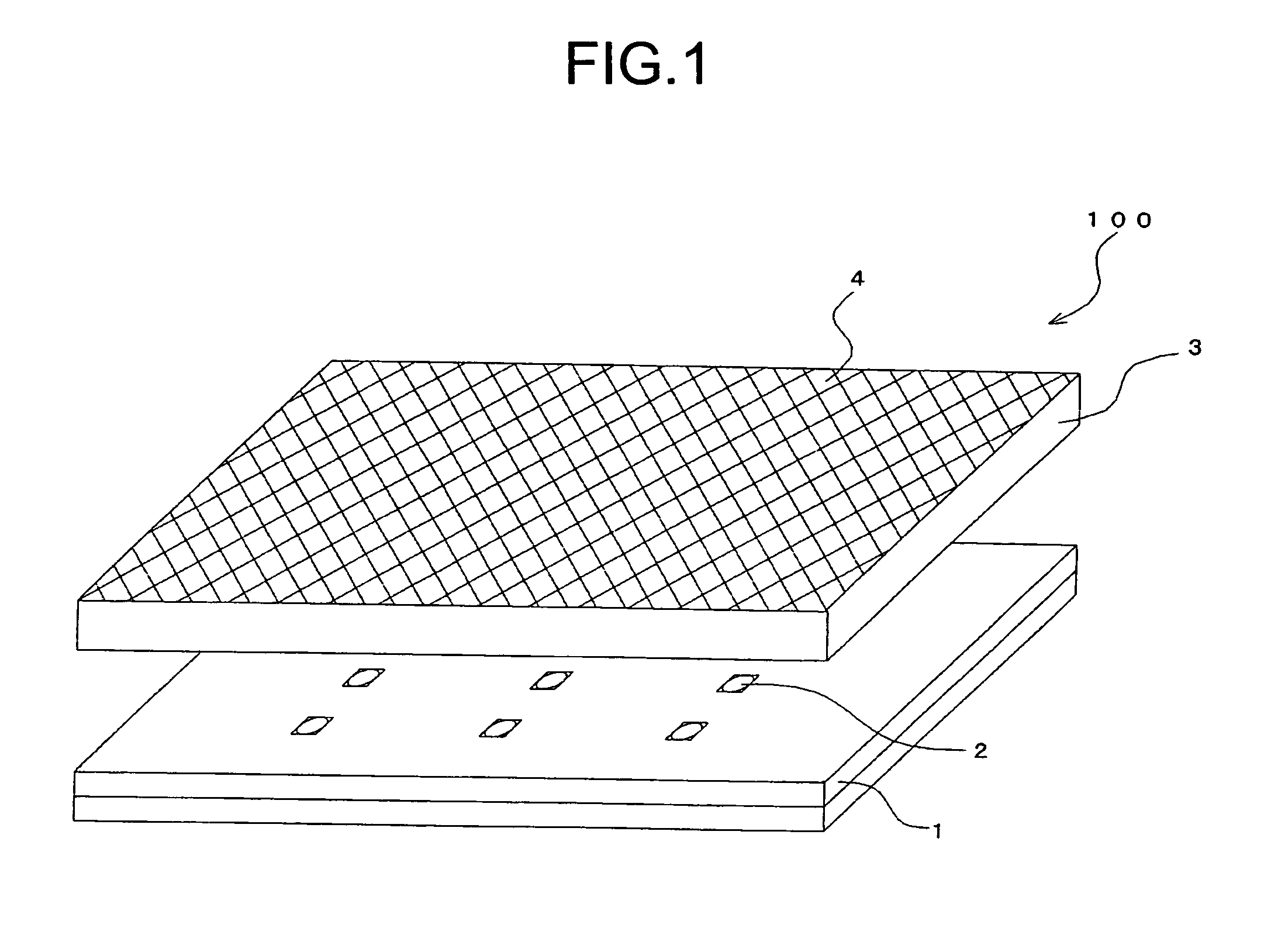Direct-type backlight device
a backlight device and direct-type technology, which is applied in the direction of diffusing elements, lighting and heating apparatus, instruments, etc., can solve the problems of insufficient luminance, reduced availability of linear light source light quantity, and uneven period luminance, so as to reduce the uneven luminance on the illuminating surface, increase the luminance observed, and reduce the electric power consumption
- Summary
- Abstract
- Description
- Claims
- Application Information
AI Technical Summary
Benefits of technology
Problems solved by technology
Method used
Image
Examples
example 10
Preparative Example 10
Pellet D for Light Diffusing Plate
[0113]Pellets D for the light diffusing plate were produced in the same manner as in Preparative Example 1, except that the amount of the resin was 99.6 parts and the amount of the light diffusing agent was 0.4 parts. Using these pellets D for the light diffusing plate as the raw material, a test plate was prepared, and total light transmittance and haze thereof were measured in the same manner as in Preparative Example 1. The total light transmittance of the test plate was 81% and the haze thereof was 99%.
example 11
Preparative Example 11
Pellet E for Light Diffusing Plate
[0114]The aforementioned resin as it was without addition of the light diffusing agent was used for preparing pellets E for the light diffusing plate. Using these pellets E for the light diffusing plate as a raw material, a test plate was prepared, and total light transmittance and haze thereof were measured in the same manner as in Preparative Example 1. The total light transmittance of the test plate was 92% and the haze thereof was 0.5%.
example 12
Preparative Example 12
Stamper 7
[0115]A nickel-phosphorus non-electrolytic plating of 100 μm thickness was formed on an entire surface of a stainless steel SUS430 (JIS G4305) having the size of 387 mm×308 mm×thickness of 100 mm. Using a monocrystal diamond cutting tool having the apex angle of 100 degrees, the nickel-phosphorus non-electrolytically plated surface was cut to form a plurality of triangle grooves having a pitch of 70 μm and an apex angle of 100 degrees. The grooves were formed along a direction parallel to the side of 308 mm length (short side direction). A stamper 7 having linear convexed structures having a triangle cross-sectional shape on the nickel-phosphorus non-electrolytically plated surface was thus produced.
PUM
 Login to View More
Login to View More Abstract
Description
Claims
Application Information
 Login to View More
Login to View More - R&D
- Intellectual Property
- Life Sciences
- Materials
- Tech Scout
- Unparalleled Data Quality
- Higher Quality Content
- 60% Fewer Hallucinations
Browse by: Latest US Patents, China's latest patents, Technical Efficacy Thesaurus, Application Domain, Technology Topic, Popular Technical Reports.
© 2025 PatSnap. All rights reserved.Legal|Privacy policy|Modern Slavery Act Transparency Statement|Sitemap|About US| Contact US: help@patsnap.com



